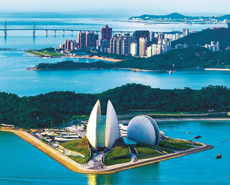
Pessimistic outlook for zinc die-casting alloy market in 2020
----Interview with Yang Zhijian
General Manager
Quanzhou Qikai Trading Co., Ltd.
General Manager
Quanzhou Qikai Trading Co., Ltd.
Established in 2012 and located at Meilin Lixi Industrial Area, Quanzhou Qikai Trading Co., Ltd. engages in zinc die-casting alloy production with national standard zinc die-casting alloy Zamak-3 and Zamak-5 as its main products. Owning sophisticated production equipment and advanced smelting technology, the company is able to maintain products quality and also provide excellent after-sale service.
Asian Metal: Hello Mr. Yang, thanks for accepting our interview. Please briefly introduce your company and production.
Mr. Yang: Our company was established in 2012 and is located at Meilin Lixi Industrial Area. Specializing in zinc die-casting alloy production, we mainly produce national standard zinc die-casting alloy Zamak-3 and Zamak-5. With an annual production capacity of 48,000t for zinc die-casting alloy, we run with an operating rate of about 1/4 now and produce about 1,000tpm of the material due to the dim market demand.
Besides, the company also trades copper scrap and non-standard aluminum alloy, with a monthly trading volume of 400t for copper scrap and 2,000t for the latter.


Asian Metal: What are your main products and where are they mainly used?
Mr. Yang: We mainly produce national standard zinc die-casting alloy Zamak-3 and Zamak-5, but can produce customized zinc alloys. At present, we have many clients in the downstream sanitary industry, and we also set foot in luggage, hardware, auto parts and other industries.
















